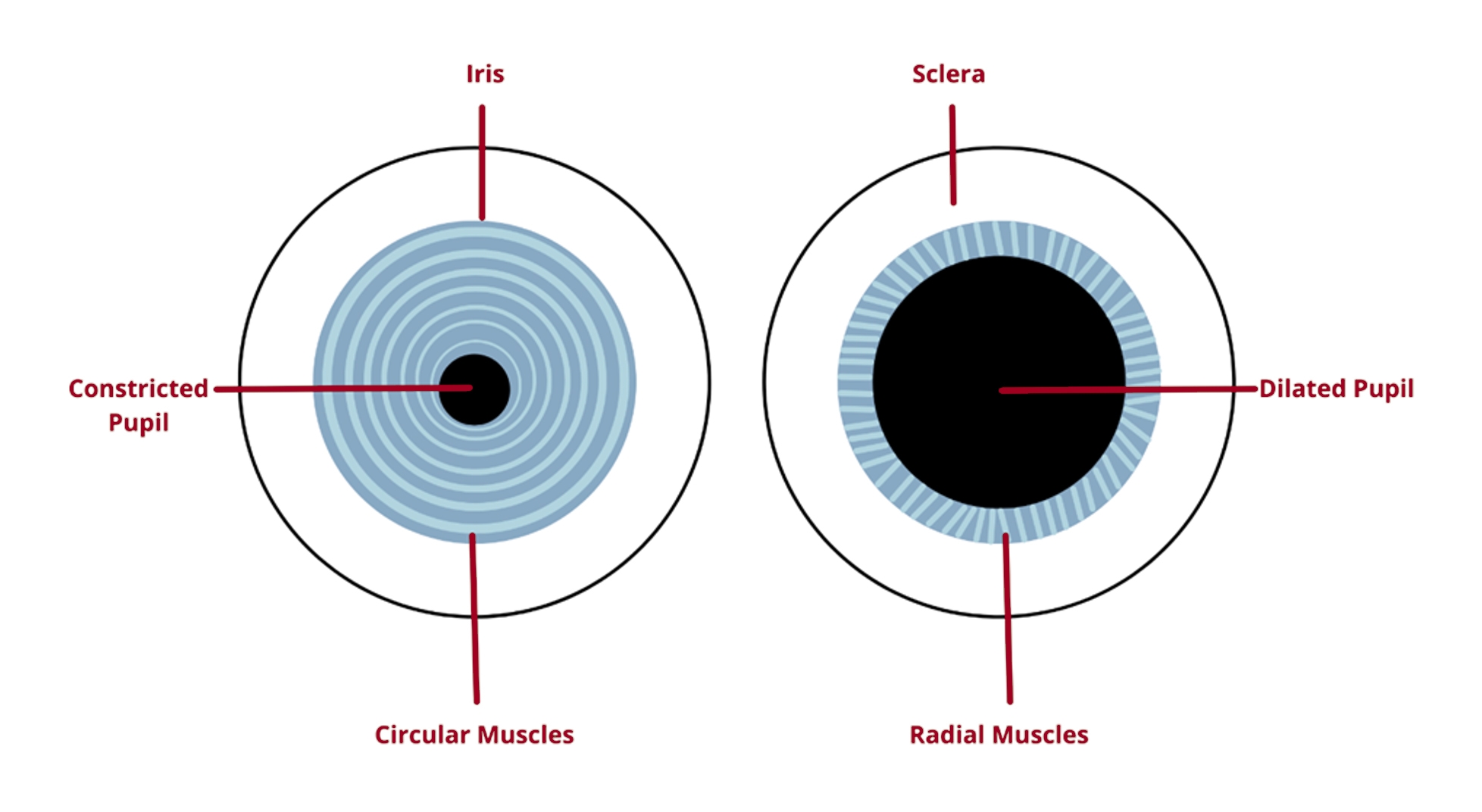05.04.2022
Pupil Responses as Indicators of Cognitive Load
 by Mirta Mikac, Product Manager
by Mirta Mikac, Product Manager
Seeing is an integral part of our interaction with the environment. Our eye movements do not only allow us to inspect objects of interest, but they also provide insights into our cognitive states. Analyzing pupil responses with eye tracking solutions helps us draw conclusions about our information processing abilities and cognitive load.
What is cognitive load?
According to the educational psychologist John Sweller, the pioneer of cognitive load theory (CLT) in the 1980s, CLT reflects our information processing when learning complex cognitive tasks. It is described as the amount of mental effort used from working memory during the performance of one or more cognitive tasks¹. In other words, since our working memory is limited in its duration and capacity, we might become overwhelmed by the amount of information that needs to be processed simultaneously at a particular time. Therefore, the instructional design should be adapted accordingly to maximize new learning and positively influence the necessary effort to acquire the new material. CLT was considered the task property in the past, but in recent history, with the NASA-Task Load Index (NASA-TLX), the cognitive load has also become human-centered².
In the wake of Sweller’s idea, the cognitive psychologist Sandra Marshall has developed an objective psychophysiological index of mental workload called The Index of Cognitive Activity (ICA). Such an index relies on a pupil signal from an eye tracker. It considers the overall pupil size, from which is then calculated a total number of rapid pupil size increases in a given time³.
Anatomy of the pupil
The pupil is the black hole located in the center of the eye. While it appears black due to the dark inside of the eye, in reality, the pupil has a transparent surface. Its diameter varies in size (approximately 2-8mm) and depends on the muscles of the colored eye area surrounding the pupil, called the iris⁴. The iris sphincter muscle is in charge of pupil constriction. By encircling the pupil, this circular muscle reduces the size of the pupil during its contraction. In addition to the contraction in response to brightness, also known as pupil light response (PLR), the pupil exhibits the same reaction to near fixation or the pupil near response (PNR)⁴.
On the other hand, the iris dilator muscle controls pupil dilation. With its radially oriented fibers, it pulls the interior of the iris outward, increasing the size of the pupil. Given its innervation by the sympathetic nervous system, our pupils elicit the psychosensory pupil response (PPR). They enlarge or dilate when we are aroused and when we exert increased mental effort⁴.

Measuring cognitive load with eye tracking
Since the early 1960s, the pupil dilation phenomenon concerning cognitive load has been investigated ⁵ ⁶. Hess and Polt exposed subjects to perform mental calculations with varying difficulty in their research⁵. They observed the accompanying changes in pupil dilation regarding effortful cognitive processing. Their findings concluded that mental activity can be directly measured with the change in pupil size, whereby the pupil size increases with the task difficulty, indicating a higher cognitive load. In line with their research, Kahneman and Beatty also observed the same pattern in pupil dilation and task difficulty when they asked subjects to memorize digits varied in the number of to-be-remembered digits⁶. Since then, many researchers have scientifically validated this argument across different tasks, including reading and various visual and problem-solving tasks⁷.
Unlike in the past, nowadays, it is relatively easy to study pupil dilation across different populations (i.e., babies, children, individuals with mental disorders, healthy individuals, etc.). With technological advances, current eye trackers are relatively affordable, have adequate precision, and provide good temporal resolution for detecting small pupil diameter changes. Contrary to other eye movements, pupil dilation is a somewhat slow process where pupils show a slower response rate. Hence, a lower sampling frequency suffices for pupil size research.
However, a few crucial things are important to consider for achieving reliable insights with eye trackers. Since pupil responses are partly reflexive and sensitive to light changes, environmental brightness and display luminance control are needed to avoid the PLR phenomenon⁴. Furthermore, appropriate screening of subjects for certain conditions affecting pupil response, including drug use, and medical conditions like Cranial nerve III (oculomotor) palsy (CN III palsy), should be conducted. Last but not least, the baseline for each subject should also be established to correctly explore changes in the pupil’s diameter, duration, and onset and analyze the speed of changes in pupil size as a response to stimulus onset.
1
Sweller, J. (1988). Cognitive load during problem solving: Effects on learning. Cognitive Science, 12(2), 257-285.
2
Hart, S.G., & Staveland, L.E. (1988). Development of NASA-TLX (Task Load Index): Results of Empirical and Theoretical Research. Advances in Psychology, 52, 139-183.
3
Marshall, S.P. (2002). The Index of Cognitive Activity: Measuring Cognitive Workload. In Proceedings of the IEEE 7th Conference on Human Factors and Power Plants (Scottsdale, AZ:IEEE), 5-9.
4
Mathot, S. (2018). Pupillometry: Psychology, Physiology, and Function. Journal of Cognition, 1(1), 16.
5
Hess, E.H., & Polt, J.M. (1964). Pupil size in relation to mental activity during simple problem-solving. Science, 143, 1190-1192.
6
Kahneman, D., & Beatty, J. (1966). Pupil diameter and load on memory. Science, 154, 1583-.
7
Rudmann, D.S., McConkie, G.W., & Zheng, X.S. (2003). Eye Tracking in Cognitive State Detection for HCI. In Proceedings of the 5th International Conference on Multimodal Interfaces (ICMI’03). ACM, New York, NY, USA, 159-163.
